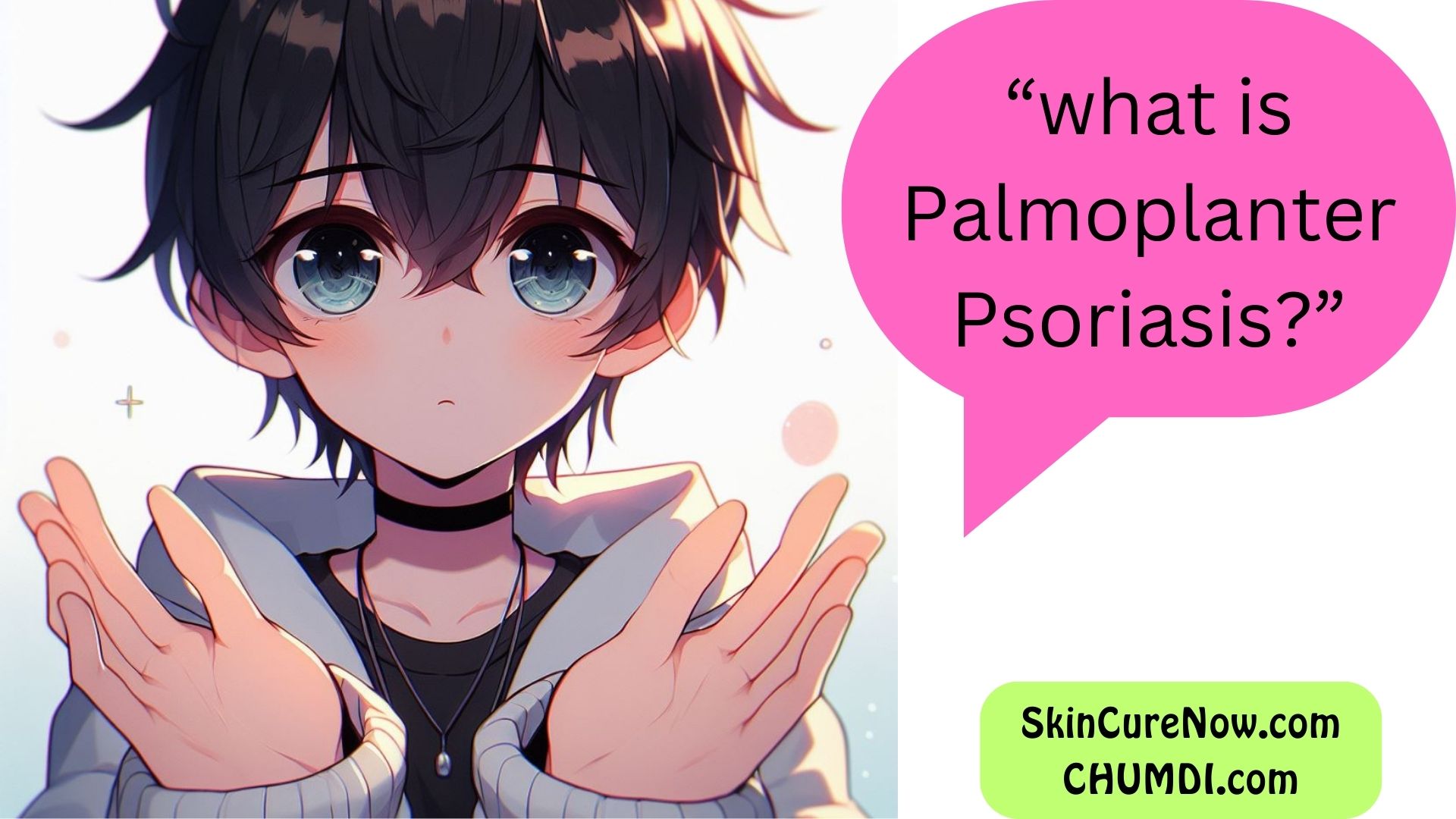Palmoplantar psoriasis
a dermatological condition characterized by the presence of psoriatic lesions on the hands and feet, can significantly impact one’s quality of life. In this comprehensive guide, we will delve into the intricacies of palmoplantar psoriasis, exploring its various manifestations, diagnostic approaches, and effective management strategies. From plaque psoriasis on palms and soles to hyperkeratotic and palmar-plantar psoriasis, we’ll cover it all.
I. What is Palmoplantar Psoriasis?
Palmoplantar psoriasis is a subtype of psoriasis that specifically affects the palms of the hands and the soles of the feet. The hallmark features include the development of psoriatic lesions on these areas, leading to symptoms such as redness, scaling, and inflammation. Unlike other forms of psoriasis, palmoplantar psoriasis poses unique challenges due to the constant friction and pressure these areas endure.
II. Symptoms and Variations:
Psoriasis on hands and feet presents with distinct symptoms, and understanding these manifestations is crucial for accurate diagnosis and effective management. Plaque psoriasis on palms and soles, characterized by raised, red patches covered with silvery scales, is a common presentation. Hyperkeratotic psoriasis, on the other hand, is marked by excessive skin thickening, leading to discomfort and limited mobility.
III. Diagnosing Palmoplantar Psoriasis:
Diagnosing palmoplantar psoriasis requires a thorough examination by a dermatologist. The clinical presentation, along with a detailed medical history, aids in distinguishing it from other dermatological conditions. Additionally, advanced diagnostic tools may be employed, such as skin biopsies, to confirm the diagnosis and rule out other potential causes.
IV. Palmar-Plantar Psoriasis: A Deeper Look:
Palmar-plantar psoriasis, often used interchangeably with palmoplantar psoriasis, specifically refers to the involvement of both the palms and soles simultaneously. This dual-site manifestation may present additional challenges in terms of treatment and symptom management. Exploring targeted therapies becomes essential to address the unique characteristics of this form of psoriasis.
V. Psoriatic Lesions on Palms and Soles:
Understanding the nature of psoriatic lesions on palms and soles is integral to devising effective treatment plans. These lesions may vary in size and severity, causing discomfort and impacting daily activities. It is essential to tailor treatment approaches to the individual, considering factors such as the extent of lesions, patient preferences, and the overall impact on quality of life.
VI. Palmoplantar Pustulosis: A Closer Look at Pustular Psoriasis:
Palmoplantar pustulosis represents a variant of psoriasis characterized by the presence of pustules on the palms and soles. These pustules contain non-infectious pus and can be accompanied by redness and scaling. Managing palmoplantar pustulosis requires a targeted approach, often involving a combination of topical treatments, phototherapy, and systemic medications.
VII. Treatment Options:
Treatment for palmoplantar psoriasis aims to alleviate symptoms, reduce inflammation, and improve overall skin health. Topical treatments, such as corticosteroids and vitamin D analogs, are commonly prescribed. In cases of more severe or refractory psoriasis, systemic medications, including biologics, may be recommended. Phototherapy, which involves exposing the affected skin to ultraviolet light, can also be beneficial.
VIII. Lifestyle Considerations:
In addition to medical interventions, lifestyle changes can play a pivotal role in managing palmoplantar psoriasis. Moisturizing regularly, avoiding triggers such as stress, and adopting a healthy diet can contribute to symptom relief. Individuals with psoriasis on hands and feet should also prioritize proper foot and hand care to minimize friction and irritation.
IX. Seeking Professional Advice:
If you suspect you have palmoplantar psoriasis or are experiencing symptoms such as psoriatic lesions on palms and soles, it is crucial to seek professional medical advice promptly. Dermatologists specialize in diagnosing and treating skin conditions, tailoring interventions to individual needs.
X. Psoriatic Arthritis and Palmoplantar Psoriasis: Understanding the Connection
Psoriatic arthritis is a common comorbidity associated with palmoplantar psoriasis. This inflammatory joint condition can affect those with psoriasis, leading to pain, swelling, and stiffness in the joints. Recognizing the signs of psoriatic arthritis early is crucial for comprehensive management. A collaborative approach involving dermatologists and rheumatologists ensures a holistic strategy to address both skin and joint symptoms.
XI. Topical Treatments for Palmoplantar Psoriasis: Targeting the Source
Topical treatments play a pivotal role in managing palmoplantar psoriasis. Corticosteroids, calcineurin inhibitors, and coal tar preparations are commonly prescribed to alleviate symptoms and reduce inflammation. Understanding the appropriate application techniques and potential side effects is essential for maximizing the efficacy of these treatments.
XII. Systemic Medications for Palmoplantar Psoriasis: A Deeper Approach
In cases where topical treatments may not provide sufficient relief, systemic medications become a crucial part of the treatment plan. Biologics, methotrexate, and cyclosporine are among the options that target the immune system to modulate the inflammatory response. Dermatologists carefully assess individual health profiles to determine the most suitable systemic approach, considering factors such as overall health and potential side effects.
XIII. Phototherapy for Palmoplantar Psoriasis: Harnessing the Power of Light
Phototherapy, or light therapy, is a viable option for managing palmoplantar psoriasis. Exposure to ultraviolet B (UVB) or psoralen plus ultraviolet A (PUVA) light can help reduce inflammation and slow down the rapid skin cell growth associated with psoriasis. Regular sessions under the supervision of healthcare professionals are essential to ensure safety and effectiveness.
XIV. Palmoplantar Psoriasis vs. Eczema on Hands and Feet: Distinguishing Between Two Skin Conditions
While palmoplantar psoriasis and eczema on hands and feet share some similarities, they are distinct skin conditions with different underlying causes. Understanding the key differences, such as the appearance of lesions and associated symptoms, is crucial for accurate diagnosis and targeted treatment. Consulting with a dermatologist ensures a precise assessment and a tailored intervention plan.
XV. Natural Remedies for Palmoplantar Psoriasis: Exploring Complementary Approaches
In addition to medical treatments, some individuals explore natural remedies to complement their palmoplantar psoriasis management. Aloe vera, coconut oil, and oatmeal baths are among the natural remedies that may provide relief. However, it’s essential to approach these options with caution and consult with a healthcare professional to ensure compatibility with prescribed treatments.
XVI. Triggers for Palmoplantar Psoriasis Flare-ups: Navigating Lifestyle Influences
Identifying and avoiding triggers is crucial for managing palmoplantar psoriasis. Common triggers include stress, certain foods, and environmental factors. By keeping a symptom diary and being mindful of potential triggers, individuals can take proactive steps to minimize flare-ups and maintain optimal skin health.
XVII. Impact of Stress on Palmoplantar Psoriasis: Unraveling the Connection
Stress is a well-known trigger for psoriasis flare-ups, including those affecting the palms and soles. Understanding the physiological impact of stress on the immune system can empower individuals to adopt stress management techniques such as meditation, yoga, or mindfulness. Incorporating these practices into daily life may contribute to symptom reduction and overall well-being.
XVIII. Differentiating Palmoplantar Psoriasis from Fungal Infections: A Diagnostic Challenge
Palmoplantar psoriasis shares clinical similarities with fungal infections, making accurate diagnosis crucial for effective treatment. Dermatologists employ various diagnostic tools, such as skin scrapings and cultures, to differentiate between the two conditions. Clear understanding and precise diagnosis pave the way for targeted interventions.
XIX. Nail Involvement in Palmoplantar Psoriasis: Recognizing the Signs
Nail involvement is common in palmoplantar psoriasis, with changes such as pitting, ridges, and discoloration. Recognizing these signs early allows for proactive management, preventing potential complications. Dermatologists assess both skin and nail symptoms to develop a comprehensive treatment plan tailored to the individual’s needs.
What is palmoplantar psoriasis?
Palmoplantar psoriasis is a subtype of psoriasis, a chronic autoimmune skin condition. It specifically affects the palms of the hands and the soles of the feet. This condition is characterized by the development of psoriatic lesions in these areas, which may include redness, scaling, and inflammation.
What are the symptoms of psoriasis on hands and feet?
The symptoms of psoriasis on hands and feet include red patches of skin with silvery scales, dryness, itching, and inflammation. In some cases, there may be thickening of the skin (hyperkeratosis) and the development of pustules on the palms and soles.
How is palmoplantar psoriasis diagnosed?
Diagnosing palmoplantar psoriasis involves a thorough examination by a dermatologist. The clinical presentation, medical history, and, in some cases, skin biopsies are considered to differentiate it from other skin conditions. Advanced diagnostic tools may be employed to confirm the diagnosis.
What are the treatment options for palmoplantar psoriasis?
Treatment options for palmoplantar psoriasis include topical treatments (corticosteroids, vitamin D analogs), systemic medications (biologics, methotrexate), phototherapy (exposure to ultraviolet light), and lifestyle modifications. The choice of treatment depends on the severity of the condition and individual factors.
Is palmoplantar psoriasis different from other types of psoriasis?
Yes, palmoplantar psoriasis is a distinct subtype that specifically affects the palms and soles. Other types of psoriasis may involve different areas of the body, such as the scalp, elbows, or knees.
Are there any specific triggers for palmoplantar psoriasis?
Triggers for palmoplantar psoriasis can vary, but common ones include stress, certain medications, infections, and exposure to environmental factors. Identifying and managing triggers are essential components of effective treatment.
Can palmoplantar psoriasis be cured?
Currently, there is no cure for psoriasis, including palmoplantar psoriasis. However, various treatments can effectively manage symptoms and improve quality of life.
How does palmoplantar psoriasis affect daily life?
Palmoplantar psoriasis can impact daily life by causing discomfort, pain, and limitations in hand and foot function. It may also affect self-esteem and body image, leading to emotional challenges for individuals managing this condition.
Are there lifestyle changes that can help manage palmoplantar psoriasis?
Yes, adopting certain lifestyle changes can help manage palmoplantar psoriasis. These may include stress management, regular moisturization, avoiding triggers, and maintaining a healthy diet.
What are the complications associated with palmoplantar psoriasis?
Complications may include joint problems (psoriatic arthritis), impact on nail health, and emotional distress. Seeking prompt medical attention and adhering to a treatment plan can mitigate these complications.
How does palmoplantar psoriasis affect nail health?
Palmoplantar psoriasis can affect nails, causing changes such as pitting, ridges, and discoloration. Regular monitoring and early intervention can help prevent further complications.
Are there specific creams or ointments recommended for palmoplantar psoriasis?
Yes, dermatologists often prescribe topical treatments such as corticosteroids, vitamin D analogs, and coal tar preparations to manage symptoms of palmoplantar psoriasis.
Can palmoplantar psoriasis be a sign of a more severe form of psoriasis?
While palmoplantar psoriasis can be challenging to manage, its presence does not necessarily indicate a more severe form of psoriasis. Severity is determined by factors such as the extent of skin involvement and associated symptoms.
What role does genetics play in the development of palmoplantar psoriasis?
Genetics can contribute to the development of palmoplantar psoriasis. Individuals with a family history of psoriasis may have a higher risk of developing this condition.
Are there specific considerations for managing palmoplantar psoriasis in children?
Managing palmoplantar psoriasis in children requires a tailored approach. Pediatric dermatologists consider the child’s age, overall health, and the impact of the condition on daily activities when devising a treatment plan.
Can changes in diet help alleviate symptoms of palmoplantar psoriasis?
While there’s no specific psoriasis diet, maintaining a healthy, well-balanced diet rich in fruits, vegetables, and omega-3 fatty acids may contribute to overall skin health and help manage symptoms.
How often should one moisturize affected palms and soles in palmoplantar psoriasis?
Regular moisturization is essential for managing palmoplantar psoriasis. Applying moisturizers multiple times a day, especially after bathing, helps prevent dryness and cracking.
What is the relationship between palmoplantar psoriasis and psoriatic arthritis?
Psoriatic arthritis is a common comorbidity of psoriasis, including palmoplantar psoriasis. Regular monitoring and collaboration between dermatologists and rheumatologists are essential for comprehensive care.
Are there support groups for individuals with palmoplantar psoriasis?
Yes, there are support groups and online communities where individuals with palmoplantar psoriasis can share experiences, gain insights, and find emotional support.
What are the long-term effects of palmoplantar psoriasis and its treatments?
The long-term effects of palmoplantar psoriasis depend on various factors, including the severity of the condition and the chosen treatments. While effective management can improve symptoms and quality of life, ongoing medical supervision is important to address any potential complications.




